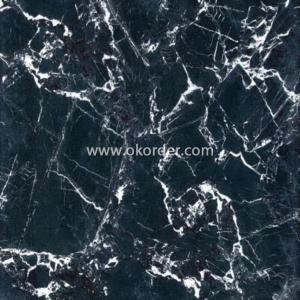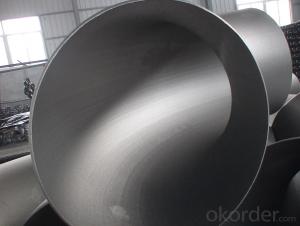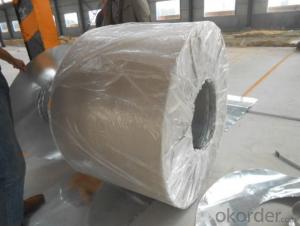1 2 Stainless Steel Tubing
1 2 Stainless Steel Tubing Related Searches
Best Paint For Stainless Steel Blanket Insulation For Steel Buildings Primer For Galvanized Steel Foam Filter For Stainless Steel H S Code For Stainless Steel Surface Grinding Wheels For Stainless Steel Surface Grinding Wheels For Hardened Steel Hole Saw For Stainless Steel Paint For Stainless Steel Stainless Steel For BbqHot Searches
Steel Mesh Panels For Sale Price For Stainless Steel Scrap Scrap Price For Stainless Steel Price For Stainless Steel Stainless Steel Tank For Sale Stainless Steel Sheets For Sale Cheap High Tea Sets For Sale Stainless Steel Tanks For Sale Stainless Steel For Sale High Density Fiberboard For Sale Solar Hot Water Collectors For Sale Scaffolding For Sale In Uae Scaffolding For Sale In Ireland Scaffolding For Sale In Houston Type Of Inverter For Solar Price Of Shipping Containers For Sale Types Of Inverter For Solar Stock Price For Aluminum Used Solar Inverter For Sale Steel Mesh Panels For Sale1 2 Stainless Steel Tubing Supplier & Manufacturer from China
Okorder.com is a professional 1 2 Stainless Steel Tubing supplier & manufacturer, offers integrated one-stop services including real-time quoting and online cargo tracking. We are funded by CNBM Group, a Fortune 500 enterprise and the largest 1 2 Stainless Steel Tubing firm in China.Hot Products
FAQ
- Different industrial and commercial applications are served by stainless steel pipes of varying dimensions and sizes. The sizing of these pipes is determined by their nominal diameter (DN) and the schedule or wall thickness. The nominal diameter represents the approximate internal diameter of the pipe and is commonly expressed in inches or millimeters. The most frequently available stainless steel pipe sizes range from 1/8 inch (3.175 mm) to 48 inches (1219 mm) in nominal diameter. However, larger sizes can be custom-made to meet specific requirements. The schedule or wall thickness of stainless steel pipes is indicated by a schedule number, which reflects the thickness of the pipe's walls. The most commonly used schedules for stainless steel pipes include Sch 5, Sch 10, Sch 40, and Sch 80. The higher the schedule number, the thicker the walls of the pipe. Apart from the dimensions and sizes, stainless steel pipes also come in various lengths, typically ranging from 20 feet (6.1 meters) to 40 feet (12.2 meters). Custom lengths can also be ordered based on specific project needs. It is important to note that these dimensions and sizes may differ based on the standards and specifications established by different countries and industries. Hence, it is crucial to consult the relevant standards or collaborate with a reliable supplier to ensure the precise dimensions and sizes of stainless steel pipes for a particular application.
- What color is stainless steel? What color is stainless steel pipe culture?
- Stainless steel is usually silver, also has colored stainless steel
- The main difference between 304J3 and 316J3 stainless steel pipes lies in their composition and corrosion resistance properties. 304J3 stainless steel is a grade of stainless steel that contains 18% chromium and 8% nickel. It is known for its excellent corrosion resistance, high strength, and good formability. This grade is commonly used in various applications, such as food processing, chemical processing, and architectural applications. On the other hand, 316J3 stainless steel is a grade that contains 16-18% chromium, 10-14% nickel, and 2-3% molybdenum. This additional molybdenum content enhances its corrosion resistance, especially against chloride environments. As a result, 316J3 stainless steel is often used in more demanding applications, such as marine environments, pharmaceutical equipment, and coastal structures. In summary, the key difference between 304J3 and 316J3 stainless steel pipes is the composition and the subsequent corrosion resistance properties. While both grades offer good corrosion resistance, 316J3 stainless steel provides superior resistance in chloride-rich environments, making it suitable for more demanding applications.
- Indeed, exhaust systems can utilize stainless steel pipes. Stainless steel, renowned for its exceptional resistance to both corrosion and heat, is a favored material for exhaust systems. It possesses the ability to withstand the severe temperatures and harsh circumstances to which exhaust systems are exposed, rendering it an enduring and long-lasting alternative. An added benefit of stainless steel pipes is their lightweight nature, which can enhance the performance of the exhaust system. Furthermore, stainless steel pipes can be effortlessly manipulated and molded, allowing for tailor-made adaptations to suit various vehicle models and configurations. All in all, stainless steel pipes present a dependable choice for exhaust systems, guaranteeing outstanding performance and longevity.
- Stainless steel pipes have several advantages over other materials such as copper or PVC. Firstly, stainless steel is highly resistant to corrosion and rust, making it suitable for various applications, especially in environments with high moisture or chemical exposure. Copper pipes, on the other hand, are susceptible to corrosion over time and may require additional protective coatings or treatments. Secondly, stainless steel pipes have excellent strength and durability, allowing them to withstand high pressure and temperature conditions. PVC pipes, although lightweight and easy to install, are not as strong as stainless steel and may crack or deform under extreme conditions. Another advantage of stainless steel pipes is their ability to handle a wide range of fluids, including corrosive substances and high-temperature liquids. PVC pipes, in contrast, are limited in their compatibility and may not be suitable for certain applications that require resistance to chemicals or extreme temperatures. Furthermore, stainless steel pipes offer superior fire resistance compared to PVC pipes, which are highly flammable and release toxic fumes when exposed to fire. This makes stainless steel pipes a safer option, especially in buildings or industries where fire safety is crucial. Lastly, stainless steel pipes have a longer lifespan compared to copper or PVC pipes. While copper pipes may develop leaks or pinholes over time, and PVC pipes may become brittle and crack, stainless steel pipes are designed to last for decades with minimal maintenance. In summary, stainless steel pipes are a reliable and durable choice for various applications due to their corrosion resistance, strength, versatility, fire resistance, and long lifespan. They outperform copper and PVC pipes in terms of durability, compatibility, safety, and overall performance, making them an excellent choice for a wide range of industries and applications.
- What kind of stainless steel square tube is used in ordinary square tubes?
- In the industry of stainless steel tube is mainly used to do some pipelines, of course in the construction industry and its use is more widely used, such as shutters, staircase handrails, railings, road partition and so on, at present, many products are used in stainless steel pipe, such as bicycles, medical equipment, automobile and so on.
- Yes, stainless steel pipes can be insulated with polycaprolactone. Polycaprolactone is a versatile and flexible thermoplastic material that can be used for insulation purposes. It can provide effective thermal insulation to stainless steel pipes and help in reducing heat transfer and preventing condensation.
- Stainless steel pipes and brass pipes are both popular choices for various plumbing and industrial applications, but they have distinct differences that make them suitable for different circumstances. Firstly, stainless steel pipes are known for their exceptional durability and corrosion resistance. They can withstand high-pressure environments and are highly resistant to rust and corrosion, making them ideal for applications in harsh conditions or where water quality is a concern. Stainless steel pipes also have a higher melting point than brass pipes, which allows them to handle extreme temperatures without compromising their structural integrity. On the other hand, brass pipes are valued for their excellent thermal conductivity and malleability. They are often used in plumbing systems as they are easy to bend and shape, allowing for greater flexibility during installation. Brass pipes are also known for their aesthetic appeal, as they have a warm, golden color that can enhance the visual appeal of a space. In terms of cost, brass pipes tend to be more expensive than stainless steel pipes. However, brass pipes often have a longer lifespan and require less maintenance, which can offset the initial higher cost. Another factor to consider is the environmental impact. Stainless steel is a highly sustainable material as it is 100% recyclable, making it an eco-friendly choice. Brass, on the other hand, requires a significant amount of energy to produce and is less recyclable than stainless steel. Ultimately, the choice between stainless steel and brass pipes depends on the specific requirements of the project. If durability, corrosion resistance, and long-term reliability are the primary considerations, stainless steel pipes are the preferred option. However, if thermal conductivity, malleability, and aesthetic appeal are more important, brass pipes may be the better choice.














































